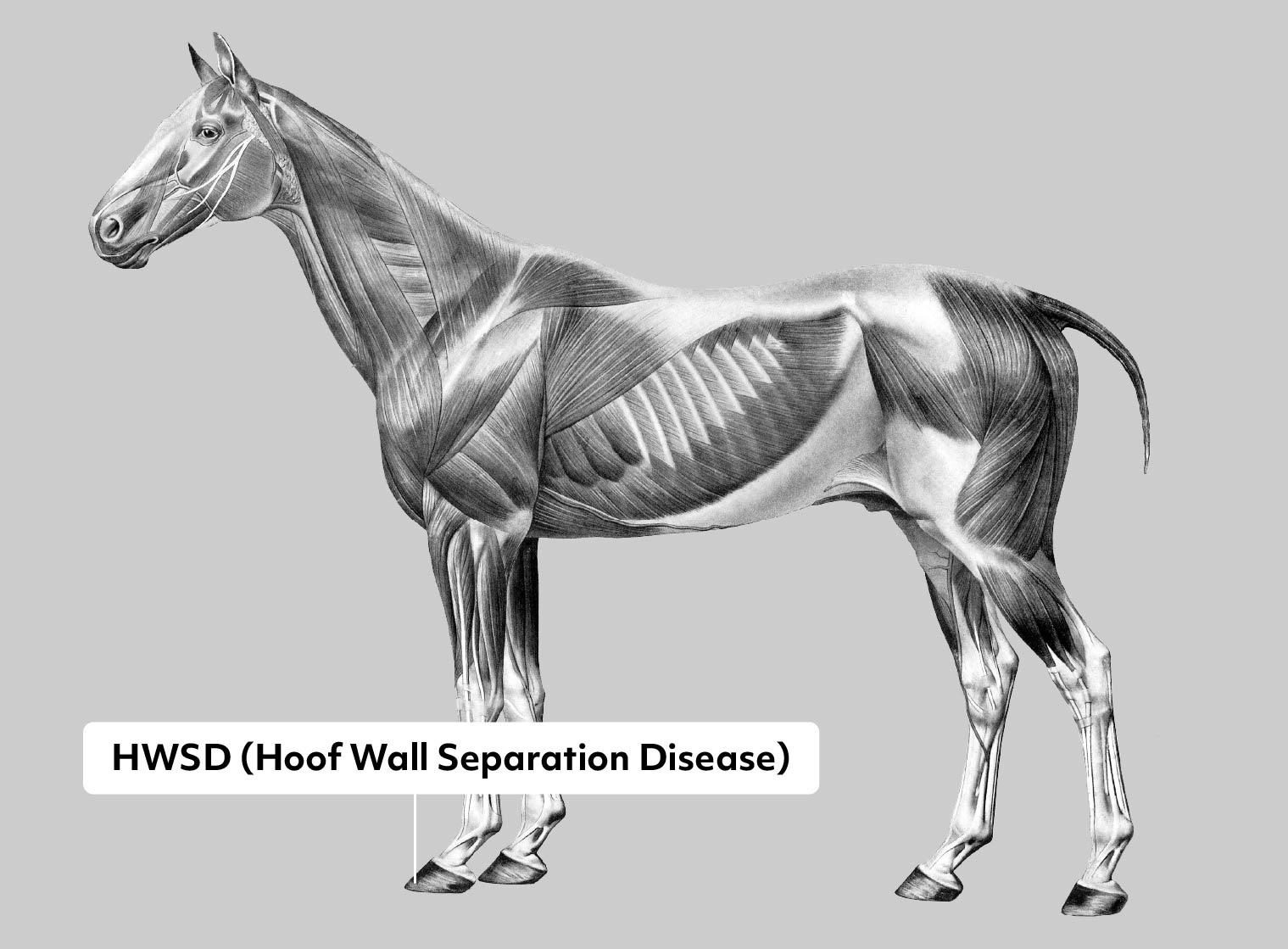Hoof Wall Separation Disease (HWSD)
Gene or Region: SERPINB11
Reference Variant: -
Mutant Variant: C
Affected Breeds: Connemara
Research Confidence: High Confidence - Strong association and functional data in studied population
Explanation of Results: hwsd/hwsd = homozygous for Hoof Wall Separation Disease, trait expressed hwsd/n = heterozygous for Hoof Wall Separation Disease, carrier n/n = no variant detected
Hoof Wall Separation Disease: Genetic Causes, Diagnosis, and Treatment in Horses
Hoof Wall Separation Disease is characterized by separation and breakage of the dorsal hoof wall extending up from the sole. Affected ponies begin showing symptoms at less than 6 months of age, and often develop chronic laminitis. Frequent hoof trimming and glue on shoes can help manage the condition. Hoof wall separation disease is an autosomal recessive disorder, thus a pony must inherit two copies (HWSD/HWSD) to show symptoms. Ponies with only one allele (HWSD/n) are known as carriers due to their ability to produce affected offspring.
Gene Information
SERPINB11 is a serine protease inhibitor of unknown function. In normal horses, it is highly expressed in the corony band. However, the insertion associated with HWSD results in a premature stop codon, resulting in an incomplete protein and greatly decreased expression.
References
Finno CJ et al., “SERPINB11 frameshift variant associated with novel hoof specific phenotype in Connemara ponies.” (2015) PLoS Genet. 11: e1005122. PMID: 25875171
More Horse Health
Hereditary Equine Regional Dermal Asthenia
Hereditary Equine Regional Dermal Asthenia (HERDA) is a degenerative skin disease that primarily affects the American Quarter Horse. Loose skin is often an early indication of the disease, and severe seromas, hematomas, ulcerations usually develop around 1.5 years of age. There is no cure, and the majority of affected animals have to be euthanized within 2-4 years.
Hydrocephalus
Hydrocephalus (HDC) is an abnormal build up of cerebral spinal fluid around the brain. It is believed that a narrowed passage within the brain prevents normal fluid absorption, leading to an obvious external cranial distension. Affected foals are often stillborn and are associated with dystocia in the dams.
Impaired Acrosomal Reaction
Impaired Acrosomal Reaction Subfertility (IAR) causes sub- or infertility in males. In normal fertilization, the the head of a sperm binds to the egg and releases the contents of a structure known as the acrosome. However, some males with IAR are unable to properly carry out this process.
